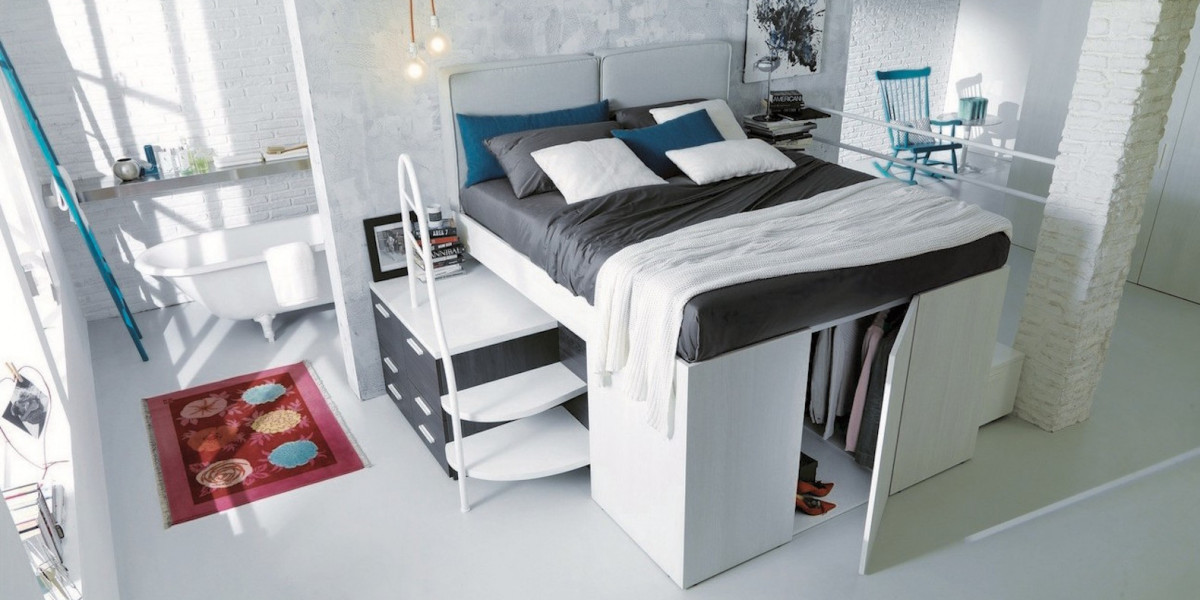As we approach 2025, the smart furniture market is set to undergo a dramatic transformation. With advancements in technology, increasing demand for sustainability, and a growing emphasis on comfort and convenience, consumer expectations are evolving rapidly. In this article, we will explore the key consumer trends in the smart furniture market that will shape buyer preferences in 2025.
1. Integration with Smart Home Ecosystems
One of the most significant consumer trends in the smart furniture market is the demand for furniture that seamlessly integrates with existing smart home ecosystems. Consumers are increasingly looking for furniture that doesn't just offer individual functionality but also connects with their broader smart home devices, such as smart thermostats, lights, voice assistants, and security systems.
In 2025, buyers will expect their furniture to be an active part of their home automation, with features like:
Voice-Controlled Adjustments: Consumers will be able to adjust the position of smart desks, chairs, or lighting using voice commands through voice assistants like Alexa or Google Assistant.
Smart Connectivity: Furniture will be designed to sync with other devices, enabling features like automatic lighting adjustments, climate control, and integrated charging systems.
Personalized Settings: As personalization becomes a key trend in smart homes, furniture pieces will be designed to adapt to individual user preferences, such as seating positions, temperature, or lighting.
By 2025, buyers will demand that smart furniture not only meet their functional needs but also be a part of a connected, tech-enabled living environment.
2. Focus on Health and Wellness
As consumers become more health-conscious, furniture that promotes well-being will be a top priority in 2025. Smart furniture is increasingly being designed with ergonomic and health-focused features that help users lead healthier lifestyles.
Key features consumers will want in smart furniture include:
Ergonomic Design: Smart desks, chairs, and beds with built-in features to enhance posture, reduce strain, and promote comfort during prolonged use. Adjustable desks that promote standing or sitting postures are gaining popularity.
Sleep-Tracking Technology: Smart beds that monitor sleep patterns, adjust firmness, temperature, and even track vital signs like heart rate and breathing will be highly desirable. These features will help consumers get better rest and improve overall health.
Fitness Integration: Consumers will expect furniture that can integrate with fitness tracking devices or apps, providing insights on activity levels or encouraging healthier behaviors.
As the demand for wellness-driven products grows, smart furniture will play a central role in helping consumers create environments that promote physical and mental well-being.
3. Sustainability and Eco-Friendly Materials
Sustainability continues to be a key consideration for consumers, and in 2025, smart furniture buyers will expect products that are not only functional but also environmentally responsible. Eco-friendly materials, energy-efficient features, and sustainable manufacturing practices will be crucial selling points.
Here’s what consumers will look for in eco-friendly smart furniture:
Sustainable Materials: Furniture made from renewable resources like bamboo, recycled wood, and biodegradable materials will be in high demand. Consumers will want products that minimize deforestation and promote a circular economy.
Energy Efficiency: With growing concerns about energy consumption, buyers will prefer smart furniture with energy-efficient features, such as built-in LED lights, solar-powered components, or low-energy consumption devices.
Recyclability and Longevity: Furniture designed to last longer, be easily repaired, or recycled at the end of its life will appeal to eco-conscious buyers. Modular designs that allow for easy upgrades and repairs will be a significant trend.
Sustainability in smart furniture will not only appeal to the environmentally conscious but will also offer consumers the opportunity to reduce their environmental impact over time.
4. Customization and Personalization
In 2025, consumers will expect a high level of customization and personalization in their smart furniture. This trend reflects a broader shift towards products that are tailored to individual tastes and needs, allowing buyers to create truly unique living spaces.
Personalization trends in smart furniture include:
Customizable Designs: Buyers will want furniture that can be customized in terms of size, color, shape, and material. Smart furniture brands will offer a variety of options to cater to different aesthetic preferences.
Adjustable Smart Features: The ability to adjust the functionality of furniture pieces will be crucial. For example, smart desks with height-adjustment features, customizable lighting, and even desks with built-in sensors that monitor the user’s posture will allow for a personalized workspace experience.
Smart Memory: Furniture that “remembers” users’ preferences, such as preferred seating positions or climate settings, will become standard. This feature will be particularly relevant for beds and chairs designed to optimize comfort based on individual needs.
By 2025, consumers will expect to control every aspect of their smart furniture, from functionality to design, creating a space that fits their specific needs and lifestyles.
5. Multifunctionality and Space Optimization
As living spaces, particularly in urban areas, become smaller, multifunctional smart furniture that saves space while providing multiple functions will be increasingly popular. In 2025, consumers will be looking for smart furniture that can serve more than one purpose, helping them make the most of limited space without sacrificing functionality.
Key trends driving the demand for multifunctional smart furniture include:
Modular Furniture: Furniture that can be easily adapted, expanded, or reconfigured to suit different purposes. For example, modular couches or smart bookshelves that can be transformed into a workspace.
Hidden Storage: Furniture that incorporates smart storage solutions to help maximize space, such as beds or sofas with hidden compartments, or desks that integrate built-in storage for devices and accessories.
Space-Saving Designs: Smart furniture solutions that help optimize small living spaces, such as folding tables, convertible sofas, or wall-mounted desks that can be tucked away when not in use.
As consumers embrace smaller homes and apartments, space-efficient smart furniture will become essential in maintaining both functionality and style.
6. Affordable Smart Furniture
While smart furniture is often associated with high-end designs and premium prices, consumer demand is shifting toward more affordable options. In 2025, buyers will expect smart furniture to be more accessible without compromising on quality or functionality.
Key factors contributing to this trend include:
Smart Features at Lower Price Points: As technology becomes more affordable, consumers will expect more budget-friendly smart furniture options that incorporate advanced features like wireless charging, app-controlled adjustments, and smart lighting.
More Accessible Brands: Established furniture brands are expanding their smart furniture offerings to appeal to a wider range of consumers. Additionally, new entrants and startups are creating smart furniture solutions at a variety of price points, making the market more accessible to middle-income households.
Subscription-Based Models: Consumers will also be interested in subscription-based models for smart furniture, allowing them to access high-tech furniture for a lower upfront cost. This model will be particularly attractive to younger buyers or those who move frequently.
Affordable smart furniture solutions will enable a broader audience to experience the benefits of technology-integrated furniture without breaking the bank.
Conclusion
By 2025, the smart furniture market will be shaped by several key consumer trends. Buyers will demand furniture that not only enhances their living spaces but also integrates with their smart homes, promotes health and wellness, and supports sustainable living. Personalization, multifunctionality, and affordability will also be essential features for attracting the next generation of smart furniture buyers.









